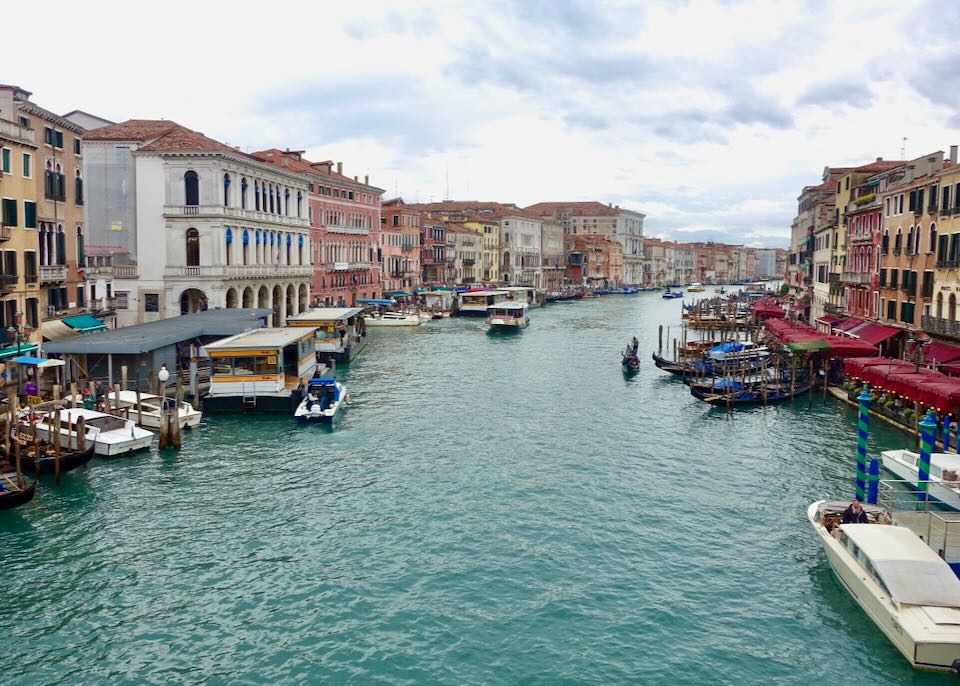
Gondolas and vaporetti (water buses) on the Grand Canal as seen from the Rialto Bridge. On the left, the floating white and yellow boxes are vaporetto stops.
Known for over one thousand years as La Serenissima (the most serene), Venice is famous for its elaborate maze of islands and canals navigated by black gondolas and crossed by hundreds of bridges. Its architecture is a brilliant collection of marble and stained-glass cathedrals and frescoed palaces spanning the centuries, and its museums are filled with Italian Renaissance works of the Venetian masters, Titian, Veronese, Tintoretto, and more. Late spring and early autumn are the best times to visit when the weather is warm, flooding is uncommon, and the crowds are thinner.
The Venice Travel Guide
Skip to our Venice FAQ Venice Basics
Venice Hotels
- Best Hotels in Venice
- Best Hotels for Families in Venice
- Best Boutique Hotels in Venice
- Best Cheap Hotels in Venice
Venice Activities and Attractions
- Best Things to Do in Venice
- Best Restaurants in Venice
- Best Bars & Clubs in Venice
- Best Shops & Markets in Venice
Venice Trip Planning
St. Mark’s Basilica sits in the San Marco sestiere (neighborhood), the political and religious heart of the city. St. Mark’s Square is home to many of Venice’s major attractions, including St. Mark’s Clocktower, the bell tower, the Doge’s Palace (Palazzo Ducale, and the Museo Correr, plus plenty of cafes (though cheaper, more authentic cafes can be found just steps outside the piazza). The Rialto Bridge, San Zaccaria, and Teatro La Fenice are less than a 10-minute walk away, while the Peggy Guggenheim Collection, Rialto Market, and Ca’ Pesaro Museum are less than a 15-minute walk from here.
Frequently Asked Questions about Venice
Where is Venice?
Venice is located in northern Italy, about 100 km east of Verona, 200 km northeast of Florence, 200 km east of Milan, and 400 km north of Rome. Relative to other European cities, Venice is about 300 km south of Munich, Germany; 430 km from Vienna, Austria; 850 km from Paris, France; 930 km from Barcelona, Spain; and about 1250 km from Athens, Greece. Venice is a small city with a total population of roughly 261,000, with only about 55,000 living in the historic center. Venice is made up of over 100 islands that span about 415 sq km, but the historic center measures only 5 km at its widest point (east to west) and less than 3 km wide from north to south, including the canals. Venice’s historic center is traditionally divided into six neighborhoods, called sestieri: San Marco, San Polo, Cannaregio, Dorsoduro, Santa Croce, and Castello. The unofficial seventh sestiere, Giudecca, lies to the south of the other sestieri across the wide Giudecca Canal. The sestieri are all highly walkable, but the bridges and stairsteps make it difficult to navigate with a stroller and almost impossible with a wheelchair.
What is Venice famous for?
The romantic city of Venice is best loved for its elaborate system of canals crisscrossed by hundreds of bridges with sleek, black gondolas navigating the gentle waves. A dreamy atmosphere pervades the city’s hodgepodge of architectural styles from the Venetian Gothic to Baroque, Byzantine to Neoclassical, cathedrals, palaces, synagogues, and boatyards. Churches brim with frescoes and mosaics, especially the Basilicas San Marco and Santa Maria Gloriosa dei Frari. Lavishly decorated palaces like the Palazzo Ducale reflect Venice’s history of wealth and power. World-class museums include the Gallerie dell’Accademia, with its 16th to 18th-century Venetian masterpieces, and the Peggy Guggenheim Collection, with its array of international modern artworks. Good Venetian cuisine is easier to find away from the touristy areas and features seafood, wild game, polenta, gnocchi, and cicchetti (Venetian tapas). Prosecco is the most popular local wine.
Venice’s most famous crossing is the Rialto Bridge over the Grand Canal, seen here. Venice has over 150 canals crossed by more than 400 bridges, making the city highly walkable despite the water. Most bridges are shaped like a raised arc to allow boats to pass under with stairs running up and down both sides, making it difficult for strollers and wheelchairs.
What cities have direct flights to Venice?
Direct flights to Venice Marco Polo Airport are available from many European cities. Flights from most cities in Western Europe (including Amsterdam, Barcelona, Berlin, Brussels, Frankfurt, London, Munich, Paris, Vaduz, Vienna, and more) take 1 to 2 hours.
Flights from everywhere else in the world require at least one stop, usually at a major city in Europe. From North American cities (including Atlanta, Chicago, Los Angeles, Mexico City, New York, and Toronto) to Venice, flights take from 10 to 14 hours on average. Flights from South America (such as Buenos Aires, Rio de Janeiro, or São Paolo) take between 14 and 18 hours. From the Middle East (Abu Dhabi, Cairo, Doha, Dubai, Istanbul, and Tel Aviv), flights take 6.5 to 10 hours. Flights from most major cities in Asia (including Bangkok, Beijing, New Delhi, Singapore, Taipei, and Tokyo) take from 11 to 18 hours; many flights from Asia to Venice make 2 stops.
What is the best month to go to Venice?
The best time to visit Venice is during April, May, September, and October. During these months the weather is sunny and warm but not too hot, and the crowds are thinner than during the peak summer travel season. Avoid visiting in August, when the weather is muggy and many shops and restaurants are closed for the locals’ month-long vacations. Avoiding crowds is easiest in Winter (outside of Carnival, the 40 days before Easter), but there is a higher chance of rain and the famous acqua alta or “high water.” The flooding rarely affects sightseeing. Acqua Alta generally concentrates in St. Mark’s Square, where the city builds elevated walkways between the major attractions.
Though Venice is filled with gorgeous art and architecture that can be enjoyed any time year, like the Basilica of Santa Maria Gloriosa dei Frari (seen here)…
…it’s best to visit during a warmer, drier month to enjoy outdoor activities like gondola rides.
How long should I spend in Venice?
With diligent planning, you can see Venice’s most famous spots in two days (one day exploring the attractions in St. Mark’s Square and one day for galleries, churches, and gondolas) but you’ll need 3 or 4 days to explore its maze of lanes and canals to find La Serenissima’s hidden gems. No matter how long you spend, taking a tour can be a great way to experience much of Venice’s history, cuisine, art, culture, and waterways in a short time.
You’ll need at least two days to see Venice’s best-loved attractions, such as the Doge’s Palace, a shining example of Venetian Gothic architecture (seen here), but it will take longer to find Venice’s off-the-beaten-path secrets. St. Mark’s Square alone can take up a full day with all of its attractions including St. Mark’s Basilica and bell tower, the Doge’s Palace, Torre dell’Orologio, Museo Correr, and the Archaeological Museum.
Where is the best area to stay in Venice?
For most travelers, the best neighborhoods to stay in Venice are in the historic center, made up of seven areas: San Marco (best for first-timers, most major attractions are here), San Polo (small but lively, home to the Rialto Market), Cannaregio (home to the world’s first Jewish ghetto, many synagogues, local feel), Dorsoduro (nightlife, art museums), Castello (best for families, with public gardens and a historic shipyard), Santa Croce (least touristy, art and history museums, the bus station is here), and Giudecca (young, artsy vibe, tends to be quiet).
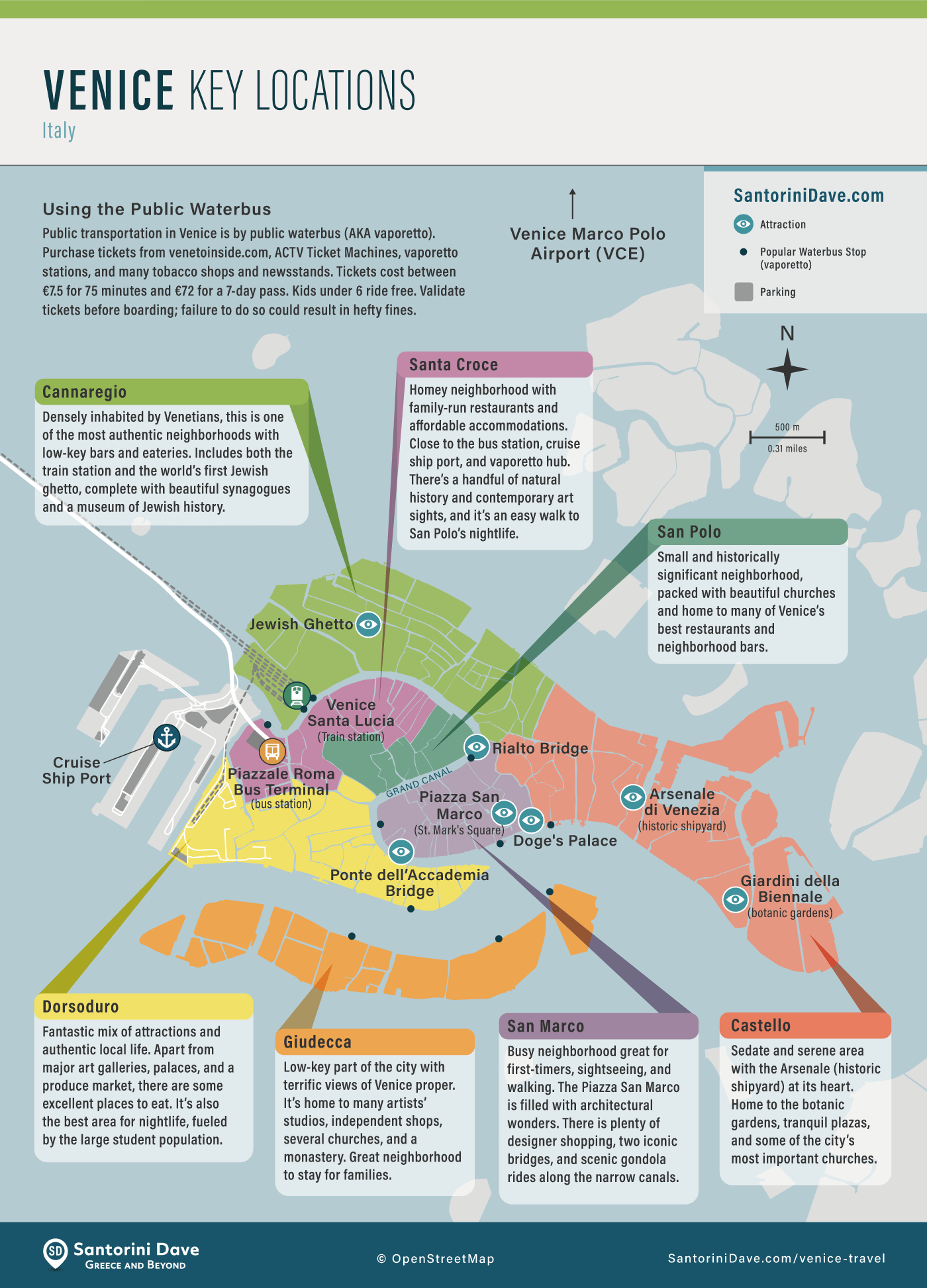
How do I get around in Venice?
Venice is a compact, walkable city, and though it’s made up of 118 small islands broken up by canals, its network of over 400 bridges make for quick walking to and from the city’s legendary landmarks, dining, and hotels. However, for longer distances or for getting to and from Giudecca Island, a vaporetto (water bus) is necessary. White and yellow vaporetto stops are located on every island and are especially easy to find for points along the Grand Canal. Prices are much higher than standard bus tickets in mainland Italy, and tourist rates for vaporetti are 6 times higher than the resident rates. Adult vaporetto tickets cost €7.50 and are good for 75 minutes from the time of validation. Children under 6 years old ride free, but children 6 and older pay the full adult fare. Buy multi-day passes if staying in Giudecca, Lido, or outlying islands; otherwise, plan on walking rather than boating to save the expense.
What are the best day trips from Venice?
Venice is well connected to the mainland by bus and train and connected to nearby islands by regularly scheduled boats, making this an ideal jumping-off point for exploring. Two of the best day trips that are inexpensive and easy to make by bus are to Cittadella (medieval walled city) and Villa Pisani, Stra (Baroque palace-turned-museum with gardens and a labyrinth). The classic Venice day trip is to take a boat to Murano, world-renowned for glass art, and Burano, known for intricate lace-making.
Burano Island is historically known for its lace work, colorful fishermen’s houses, and distinctive cuisine. Take the #12 vaporetto from Venice to reach Burano, a 50-minute ride away.
Is Venice safe?
Venice is an incredibly safe city with very few incidents of crime and, accordingly, a low police presence compared to most major cities in Italy. Except for the area near the bus station in the Santa Croce sestiere, all of Venice’s streets are pedestrian-only and generally filled with people at all times of day into the evening. Venice’s nightlife is fairly tame, due to a city-wide noise ordinance that stops all live music by 11:00 p.m. Streets and squares in Venice are typically not very well-lit at night, but despite this crime is extremely rare. Like any popular destination, travelers should be careful of pickpockets, especially in more densely traveled areas, including St. Mark’s Square, the Rialto Bridge, and the train station. If taking normal precautions, travelers (including women traveling solo) should feel safe
Outside the popular cicchetti and wine bar, Cantine Vino gia Schiavi, in the Dorsoduro sestiere. Streets in Venice are not as well lit at night as other Italian hotspots, like Florence or Rome. However, Venice’s popularity with travelers and its small size mean there are almost always people out and about, creating a safe environment.
What currency is used in Venice?
Italy is part of the European Union, so the currency used in Venice is the euro (€). Most shops, restaurants, and museums in Venice accept credit cards, but it is a good idea to also have some cash on hand for small purchases like bottled water, souvenirs, cheap cicchetti, and Rialto Market finds. Even in places that accept credit cards, they may only accept cash for smaller purchases under €5 or €10.
Most places in Venice accept credit cards, but many street vendors, like these at the Rialto Market, accept cash only.
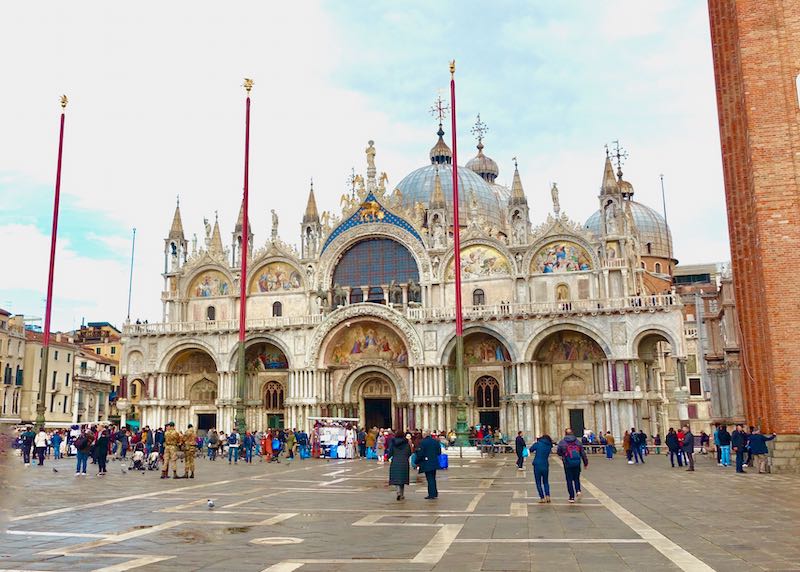
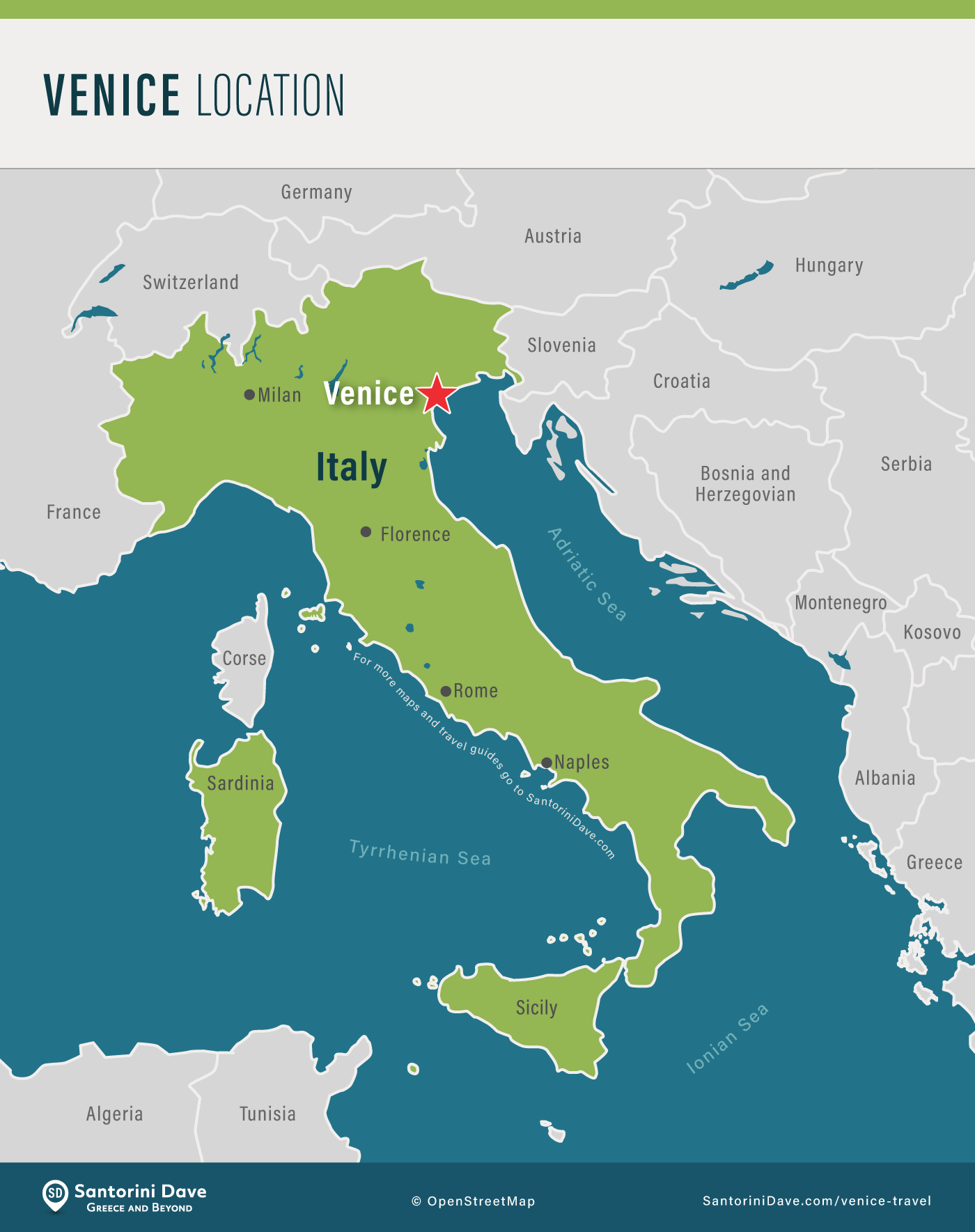
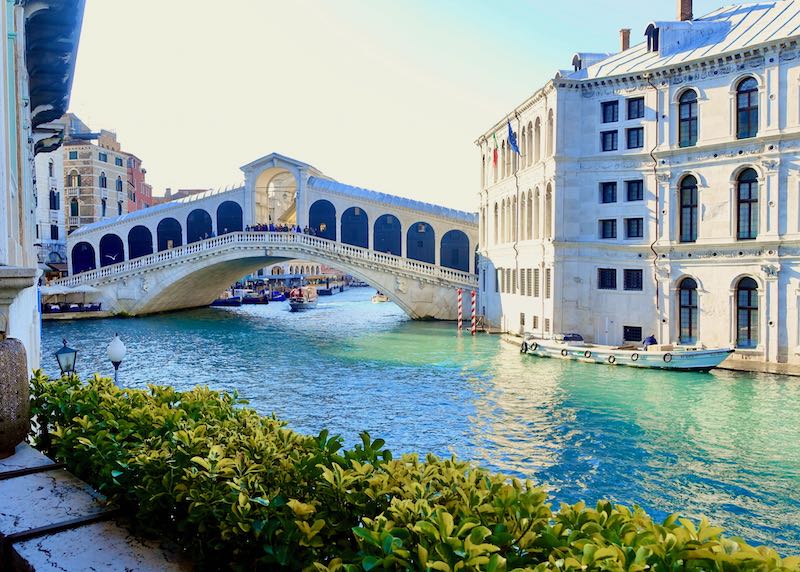
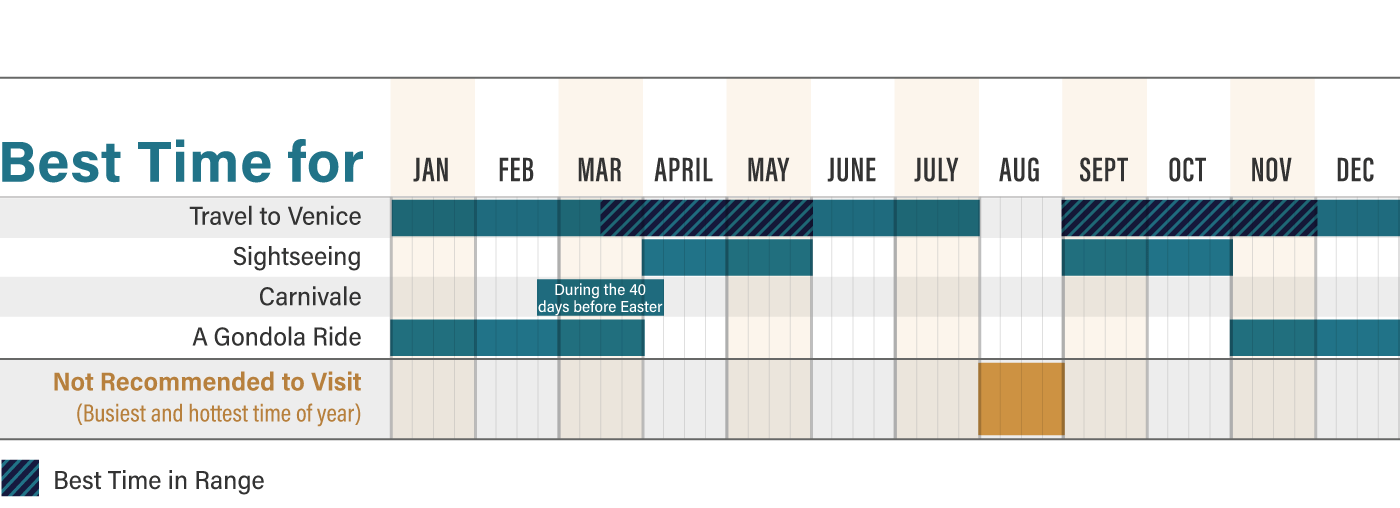
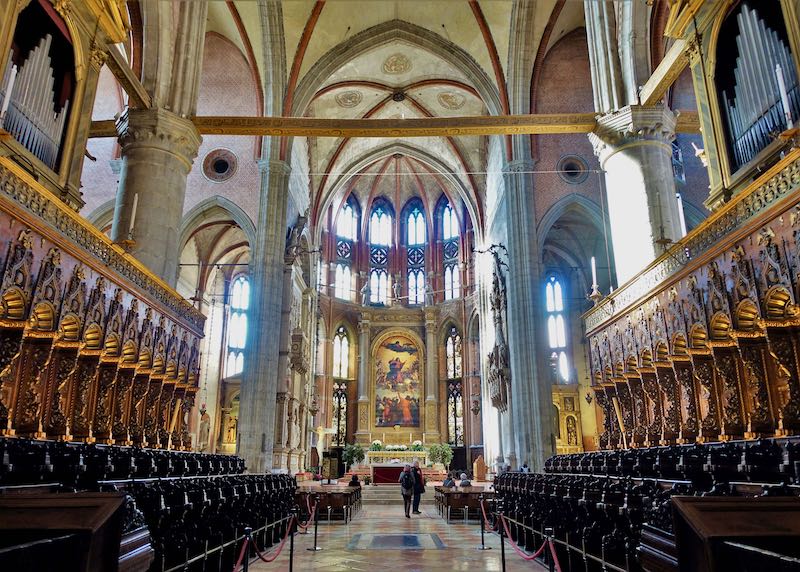
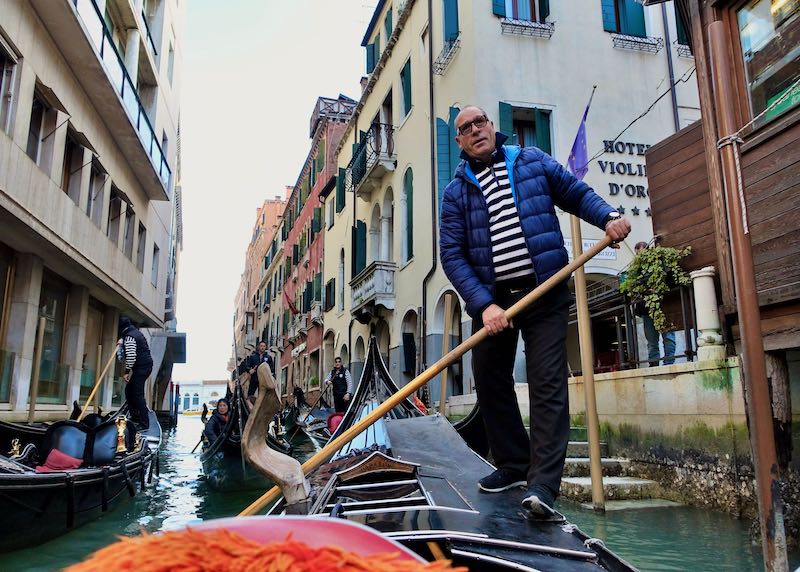
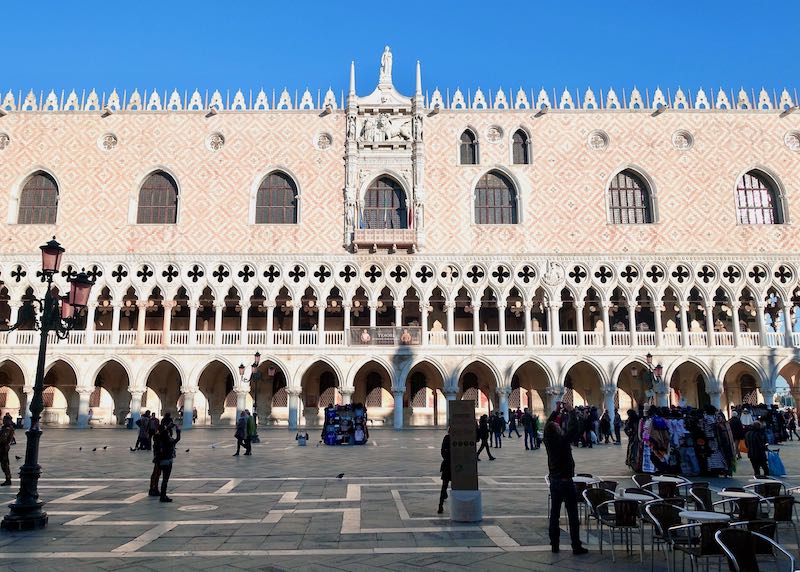
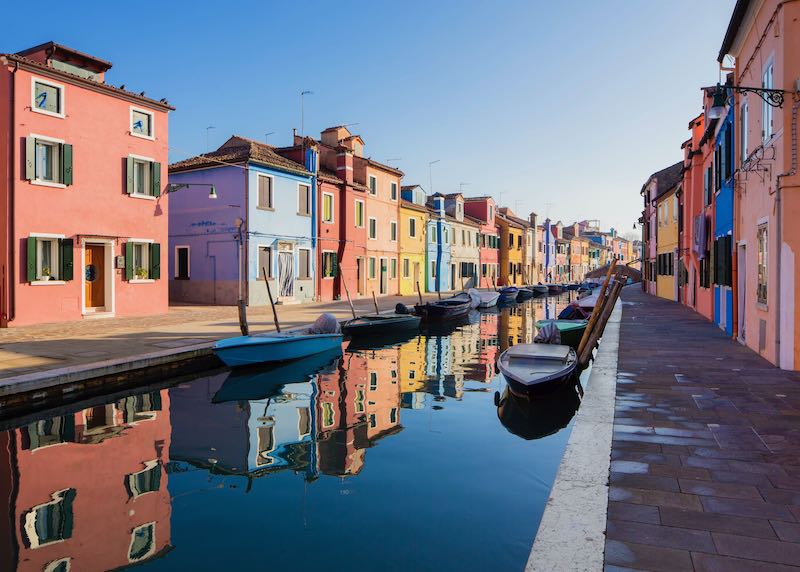
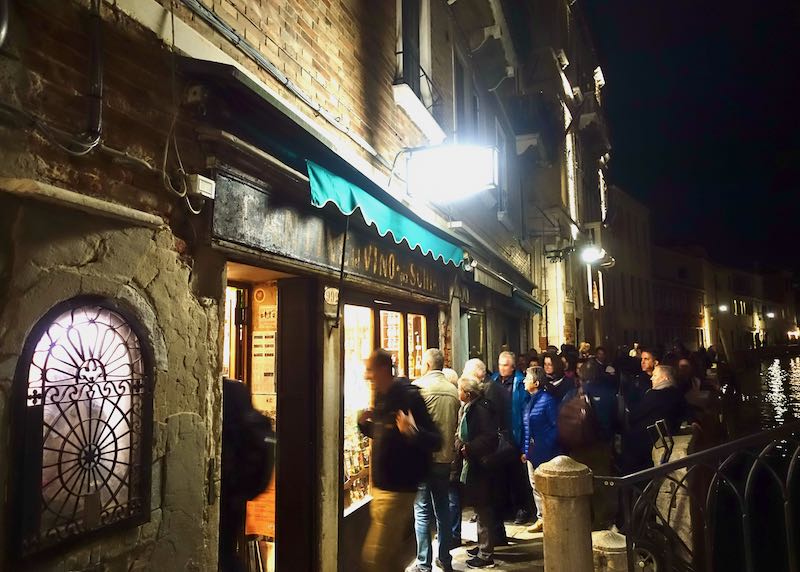
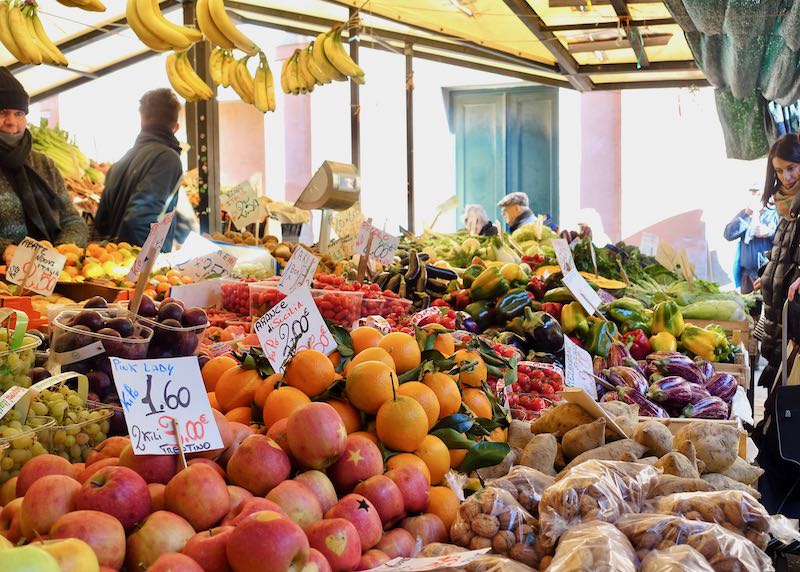
About Santorini Dave